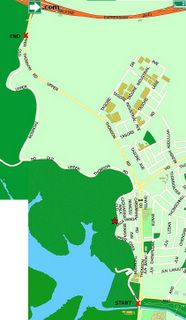Just got my rear tire changed today, fitting the same model as my front.
Bridgestone Battlax BT020 Radial series. It's a pair of tires meant for sports-touring, meaning the endurance of the tires are higher, taking up a longer time to heat up and get sticky. But it can last longer than most racey tires and grippier than the average crap.
Still can get pretty fun if I want. Ofcourse at the end of the day, I just don't want my safety to be compromised. Will you spend it for safety? Or excitement? Or just let it be and spend the money on food and women when you can't even live to see the next light?
People have been telling me riding motorcycles is dangerous. But is that statement helpful? Or detrimental? It's not going to change the fact that I'm riding, and telling me that it's dangerous doesn't help me to become a safer rider. I will probably turn a deaf ear and ride as usual. How many of you so-called professionals out there know what's motorcycle safety about? You superficial bastards.
Yes, statistics have shown deaths are more prone from motorcycle accidents and the fact that they're the most prominent figure out of all vehicle accidents. But does these statistics tell you that most of these riders who are involved in accidents do not have adequate safety precautions and perception?
Just an example, the percentage of accidents/falls happen on a race track is definitely more frequent compared to the amount happening on roads, but why are the death statistics on a track lower? Because they're wearing over a few k worthed of equipments, and they're doing the right things on the right events.
Do you think you can survive a skid over at 90km/h without gears? I can survive a fall from 200km/h with leather suits. So? Invest in some proper gear today man. Save up and wake up your bloody idea, scooters can well go over 100km/h as well. I do not have to wear a flamboyant Grand Prix racing suit today, but at least I can wear an abrasion-resistant leather jacket to save my life in case of a fall at road limits. At the very least, don't wear a fucking pair of shorts and singlet with sandals. It screws up your image and insults your bike, you deserve it if you die in an accident for insulting yourself, your bike and compromising your own safety.
Besides, wearing something that covers you from top to toe and fit to tough gives you extra confidence when handling your bike. Try wearing your fucking shorts and singlet with sandals and compare it with your jeans and long sleeve shirt with covered shoes.
EducationI must say the education given by the driving centres are not adequate to provide enough safety information to the everyday rider. Plus, how many of you are still actually following the guidelines taught by the school now. Take a little test, how many of you are braking into corners/banking and holding on to your clutch as well? I bet 80% of you are.
You superficial bastards probably don't know why it is necessary to drive through a corner than slip into a corner. And you'll probably die without knowing why. I just took my friends out yesterday night to give them a little example of "decreasing radius" and limited vision @
Old Upper Thomson Road (A map below for your reference). And I believe Andy can understand that intention best, he almost crashed for slipping in through the corner too fast without realising the decreasing radius. Most importantly, he wasn't confident of banking further down to clear the corner because he was not trained to. I can see that he still has abit of clearance to go for cornering, but can he do it? Or does he think he can do it?
It's just a little education that I can let them in on before they need to handle such real-life critical situations again. Were you ever briefed on such practical road usage?

Old Upper Thomson Road







